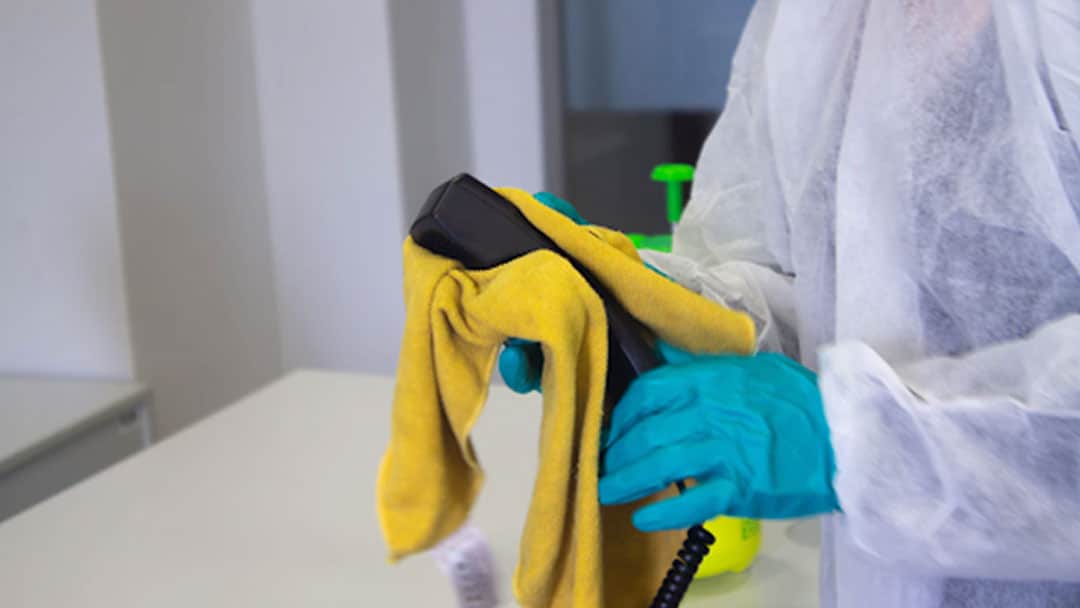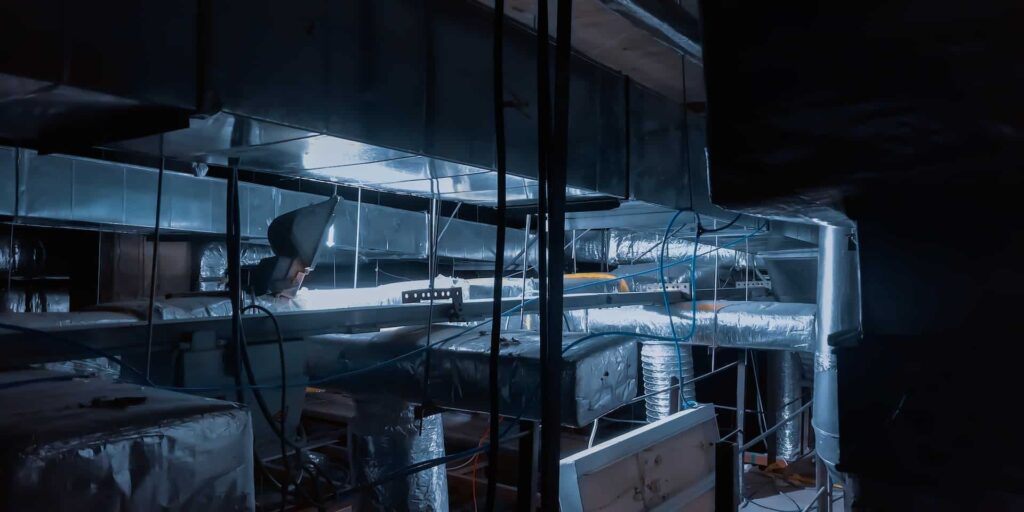Data centers and the advanced technology they contain are highly susceptible to a wide range of impacts caused by the presence of dust and other airborne particles. The dust has the power to cause several problems, affecting everything from the energy efficiency of equipment to potentially causing critical equipment failure and server interference, leading to data loss, system restarts, and more.
Why is it Critical to Keep Data Centers Free of Dust?
Because the components of modern computers and other data center equipment have become so small, they have also become much more susceptible to these significant issues, even with only minimal exposure to dust. If you’re the manager or owner of a data center looking for professional cleaning experts who have been specially trained to handle data center equipment, please consider contacting C&C today.
Related: Data Centers: What They Do & Why [2023]
What are the Benefits of Keeping Data Centers Clean?
Keeping data centers clean and dust-free provides several benefits, including keeping equipment safe while prolonging the lifespan of the technology itself to prevent the need for costly replacements. Dust cleaning can also significantly reduce the risk of fires caused by hardware dust accumulation, and general hardware failure and minimize the overall presence of air pollution and live contaminants.
Data Center Contamination Causes
Impurities come from both outside and inside data centers. Contaminants that can get in from the outside world consist of pollen, air contamination, sea salt, and building dust. Employees bring in lint from clothes, skin particles, hair, and fibers. Contaminants from within include particles from data center infrastructure and regular operations, such as particles from CRAH systems, packaging materials, and flooring tiles. Other pollutants consist of destructive gasses from processes both inside and outside the data center. Corrosive gasses and dust particles can damage IT equipment in time.
Common impurities include:
Ferrous metal particles: Ferrous metal particles come from printers, tape drives, parts in HVAC systems, floor tiles, avenue pipes, and different mechanical parts. Because these metal particles are conductive, they can trigger electrical damage to circuit boards, leading to downtime.
Concrete dust: Unsealed concrete releases dust into the air, including calcium, silica, and other destructive and abrasive spin-offs. Even when concrete is sealed, these seals can break down over time and must be examined frequently.
Destructive gasses: Gaseous contaminants such as sulfur dioxide, hydrogen sulfide, nitrogen dioxide, chlorine, ozone, and others cause copper and silver corrosion. Over time, these pollutants cause the deterioration of fragile metal parts and electrical wiring in modern circuit boards and chips.
Zinc and tin hairs: These whiskers are little metal filaments that grow from electroplated steel floor plates, bars in the ceiling, and other metal elements. Since tin and zinc are effective conductors of electrical power, these filaments can cause shorts when they break off, distribute in the air, and be in contact with circuits.
Chlorides/salts: Anyone who has been to the beach knows how rapidly the salted air can cause corrosion on vehicles and other metal objects. Data centers located in coastal areas must be careful of airborne salinity levels.
Electrostatic dust: Hazardous dust and lint particles from clothes, cardboard, paper, and other particles can become static-charged and disrupt servers triggering information loss, incorrect commands, resets, and other concerns.
Tips to Keep Your Data Center Clean
Protect your devices by developing guidelines for all personnel and visitors to support this goal. For example, a contamination prevention effort can notify others of what activities are acceptable for your environment.
Develop computer room protocols:
- Don’t allow food or beverages inside the computer system space.
- Do not unpack or uncrate equipment or other products inside the data center.
- Do not keep wood, cardboard, or paper-type items inside the computer room.
- Do not prop open doors that result in non-computer room locations.
- Do not enable any work to take place in the room until the environmental effect of the work is understood AND protocols for contamination control have been evaluated and approved.
- Any products or tools brought into the computer space by suppliers or staff members must be clean and contaminant-free.
Maintain a disciplined data center cleaning program:
- Clean top of floor surface areas quarterly
- Tidy devices and environmental surfaces often
- Clean the underfloor plenum a minimum of once per year.
- Keep a consistent cleaning schedule.
- Increase cleansing frequency throughout building and construction or other contamination-producing events.
Interior Dust Cleaning for IT Buildings and Equipment
Suppose dust has settled into IT equipment or is highly present in IT-designated buildings. In that case, professional cleaners will need to be called in to handle the issue using specialized tools, such as ESD equipment containing a HEPA filter to collect and trap dust.
Cleaning IT Equipment and Server Cabinets
Dust and dirt can be attracted by static electricity, so IT devices, server cabinets, switches, and other technological equipment will need to be thoroughly cleaned of dust regularly. Doing so will prevent potential safety hazards, server failures, or other interruptions.
Cleaning Cable Routes and Wire Trays
It’s incredibly easy for dust to collect on power lines, fiber optic cables, and network cables, so these components will also have to be carefully cleaned, along with the rest of the data center equipment.
Data Center Step-by-Step Dust Cleaning
Dust is quite stubborn and tends to leave behind residue even after being wiped down, especially if the dust has to be cleaned without much water. It’s essential that data center cleaning staff completely remove all traces of dust and other pollutants from their technology to keep the equipment protected while ensuring that it lasts as long as possible.
Step 1
First, a professionally trained data center cleaning service should use a dust filtering vacuum with specialized HEPA filters to remove even the finest dust particles from on and around the equipment, as well as desks and other work surfaces.
Step 2
Equipment should then be carefully wiped down with slightly damp microfiber rags to collect any remaining dust. The water used should be clear to prevent streaks, and the rags should be frequently rinsed. Also, staff should remember to wet and rinse their rags away from the server rooms, as liquids should never be brought near the machines.
Related: Data Center Cooling 101: From Start to Finish
Step 3
Dust remains in the air for an extended time and will settle onto surfaces very slowly, especially after maintenance repairs, construction work, or other such projects. Ensure the cleaning process noted above is done on a routine basis to limit the presence of as much dust as possible.
Step 4
Cleaning and maintenance staff should ensure that there are no drafts in the data center that could increase the presence of dust and spread it throughout the facility.
Server Room Floor and Raised Floor Cleaning
It’s not just the data center equipment that needs to be routinely cleaned by professionals to keep everything running smoothly. The floors and areas surrounding (and underneath) the equipment will also need to be cleaned to remove the presence of harmful dust and dirt particles effectively. Ensuring that these areas are regularly cleaned will help further protect the data center’s equipment by removing excess dust.
Server Room and Raised Floor Step-by-Step Dust Cleaning
Cleaning the floor and subfloor may not be as tricky as cleaning the actual data center equipment. However, it is just as essential and must be done carefully to prevent any potential damage to the area surrounding the equipment or the equipment itself.
Step 1
Begin the process by removing a few of the floor panels and carefully clean them of any dust or other dirt particles using a vacuum and a slightly damp microfiber cloth. Again, rinse the rags regularly and avoid bringing any liquid close to the data center equipment.
Related: Data Center Infrastructure: What You Need to Know
Step 2
After cleaning a section of the floor panels, cleaning staff should use an ESD vacuum with HEPA filter to remove dust from the bare floor and subfloor, and any floor supports that they find.
Step 3
Once all of the floor panels and the areas under them have been thoroughly cleaned, put the panels back in their proper position and clean off the floor’s surface once more with the ESD vacuum. If there are any remaining particles that the vacuum can’t remove, take a slightly damp microfiber cloth to clean them before letting the area dry. Be sure to avoid leaving water on the surface or edges of the floor panels, as it could damage them over time.
Are you searching for a high-quality provider of data center and equipment cleaning services for your business? Check out C&C Technology today.
Last Updated on January 20, 2023 by Josh Mahan




